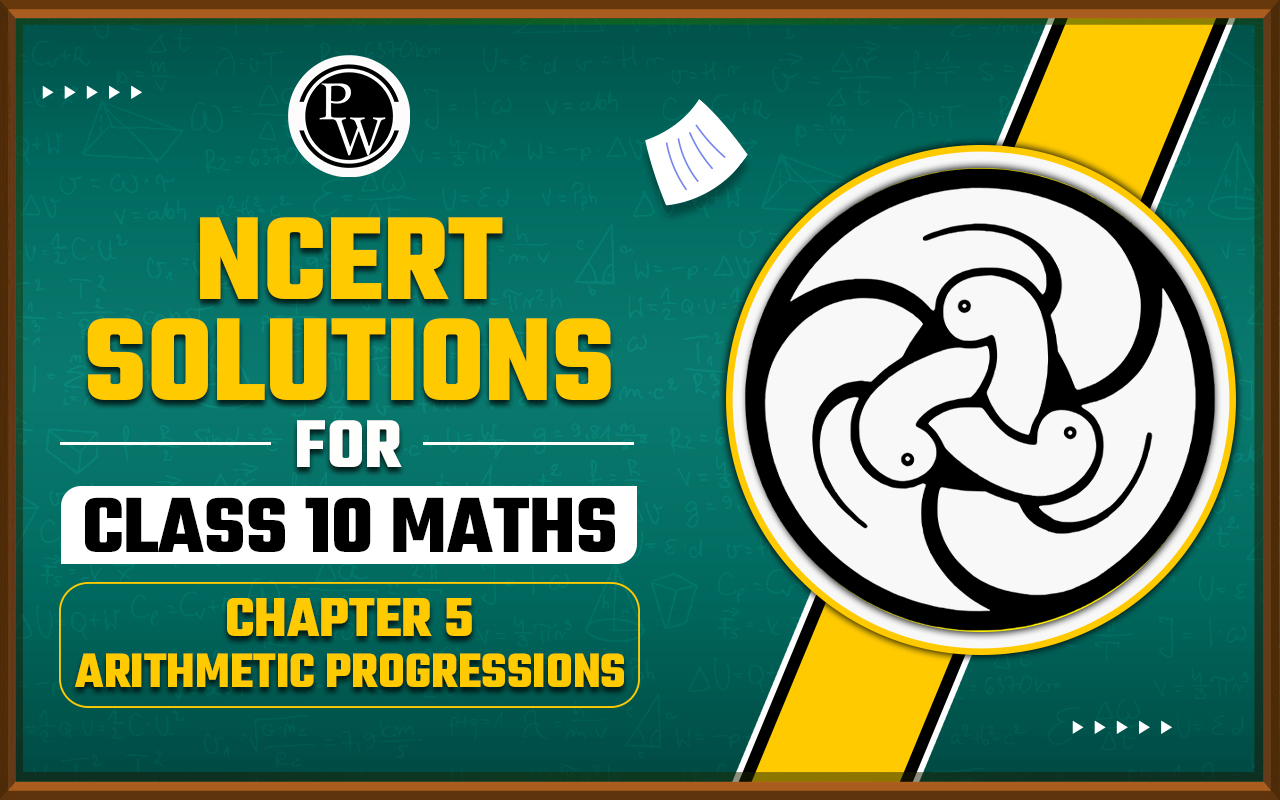
Arithmetic Progression Class 10 Chapter 5, NCERT Solutions: The NCERT Solutions for Class 10 Maths Chapter 5 Arithmetic Progressions help students master key concepts with step-by-step guidance.
These arithmetic progression class 10 solutions cover finding the nth term, sum of n terms, and solving all the arithmetic progression class 10 exercise 5.1, 5.2, 5.3, 5.4 questions effectively, boosting problem-solving skills and exam readiness.
Chapter Concept Highlights- Arithmetic Progression Class 10 Solutions
Class 10 Maths Chapter 5 introduces arithmetic progressions and provides step-by-step practice through exercises. Students can use these arithmetic progression class 10 solutions to understand concepts clearly and practise effectively.
-
Arithmetic Progression Class 10 Exercise 5.1: Focuses on the basics of arithmetic progression, including finding the nth term of a sequence.
-
Arithmetic Progression Class 10 Exercise 5.2: Covers the sum of the first n terms and problems related to sequences in daily life.
-
Arithmetic Progression Class 10 Exercise 5.3: Combines concepts to solve mixed problems involving the nth term and the sum of n terms.
-
Arithmetic Progression Class 10 Exercise 5.4: Includes advanced and word problems, helping students apply concepts in real-life scenarios.
Arithmetic Progression Class 10 Chapter 5 Exercise-wise Links
Chapter 5 of Class 10 Maths focuses on understanding and applying arithmetic progressions through structured exercises. Each exercise helps students practise concepts like the nth term, the sum of n terms, and real-life applications. Using these arithmetic progression class 10 solutions ensures accurate learning and better exam preparation.
|
Arithmetic Progression Class 10 Chapter 5 Exercise-wise Links |
Importance of Class 10 Maths Chapter 5- Arithmetic Progression
Chapter 5, Arithmetic Progression, is a fundamental part of Class 10 Maths that helps students understand patterns in numbers and sequences. Learning this chapter is important because:
-
Builds problem-solving skills: Understanding nth term and sum formulas allows students to solve a variety of sequence-based problems quickly.
-
Applies to real-life scenarios: Concepts of arithmetic progression appear in finance, population studies, and other practical situations.
-
Strengthens exam readiness: Exercises and NCERT Solutions improve accuracy, speed, and confidence for board exams.
-
Foundation for higher studies: Arithmetic progression concepts are used in Class 11 & 12 Maths, especially in sequences and series.
- Practising all the arithmetic progression class 10 exercises using the NCERT solutions ensures students not only score well but also develop a deeper conceptual understanding of sequences and patterns.
Complete Arithmetic Progressions in One Video
Explore More Chapters
